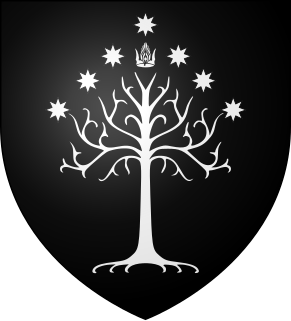It is proposed that this article be deleted because of the following concern:
If you can address this concern by improving, copyediting, sourcing, renaming, or merging the page, please edit this page and do so. You may remove this message if you improve the article or otherwise object to deletion for any reason. Although not required, you are encouraged to explain why you object to the deletion, either in your edit summary or on the talk page. If this template is removed, do not replace it . The article may be deleted if this message remains in place for seven days, i.e., after 04:21, 20 November 2019 (UTC). Find sources: "Cirion" – news · newspapers · books · scholar · JSTOR |
This article needs additional citations for verification .(November 2019) (Learn how and when to remove this template message) |
| Cirion | |
|---|---|
| Tolkien character | |
| Information | |
| Aliases | Steward of Gondor |
| Race | Man |
| Book(s) | Unfinished Tales , The Return of the King |
Cirion is a fictional character in J. R. R. Tolkien's universe of Middle-earth. He is first mentioned in the Appendices of Return of the King as the twelfth ruling Steward of Gondor. His role is later expanded in Unfinished Tales .

John Ronald Reuel Tolkien was an English writer, poet, philologist, and academic, who is best known as the author of the classic high fantasy works The Hobbit, The Lord of the Rings, and The Silmarillion.

Middle-earth is the fictional setting of much of British writer J. R. R. Tolkien's legendarium. The term is equivalent to the term Midgard of Norse mythology, describing the human-inhabited world, that is, the central continent of the Earth in Tolkien's imagined mythological past.

Unfinished Tales of Númenor and Middle-earth is a collection of stories and essays by J. R. R. Tolkien that were never completed during his lifetime, but were edited by his son Christopher Tolkien and published in 1980. Many of the tales within are retold in The Silmarillion, albeit in modified forms; the work also contains a summary of the events of The Lord of the Rings told from a less personal perspective.
Cirion was born in T.A. 2449 and succeeded his father, Boromir I, in T.A. 2489 at the relatively young age of 40.
During his rule, the evil Men known as Balchoth gathered for an assault upon Gondor, passing over the Undeeps of Anduin into the northern province of Calenardhon. Cirion could not spare many men to defend this part of his realm, and in despair he sent several messengers to their old friends the Éothéod, a people living in the far north.
In J. R. R. Tolkien's Middle-earth fiction, such as The Hobbit and The Lord of the Rings, the terms Man and Men refer to humankind – in contrast to Elves, Dwarves, Orcs, and other humanoid races – and does not denote gender. Hobbits were a branch of the lineage of Men.
In the fiction of J. R. R. Tolkien, "Easterling" and "Easterlings" were generic terms for Men who lived in Rhûn, the vast eastern region of Middle-earth. Many fought under Morgoth and his successor Sauron, the Dark Lords of Middle-earth.

Gondor is a fictional kingdom in J. R. R. Tolkien's writings, described as the greatest realm of Men in the west of Middle-earth by the end of the Third Age. The third volume of The Lord of the Rings, The Return of the King, is largely concerned with the events in Gondor during the War of the Ring and with the restoration of the realm afterward. The history of the kingdom is outlined in the appendices of the book.
Only one man, Borondir, reached the Éothéod capital of Framsburg, and delivered his message to the king Eorl the Young.
After not receiving any answer for a full year, Cirion set out west through Anórien, to prevent the Balchoth from crossing the Anduin at the Undeeps and the Wold.
The army of Gondor was defeated and driven back across the river Limlight to the Field of Celebrant. In what was probably a coordinated attack, Orcs had come out of the Hithaeglir (Misty Mountains), and assailed the flank from the west, driving the forces of Gondor towards the Anduin. All hope was lost, when unlooked for came the riders of the Éothéod out of the North. Together the Éothéod and the army of Gondor defeated the Balchoth and Orcs, driving them into the Wold.




